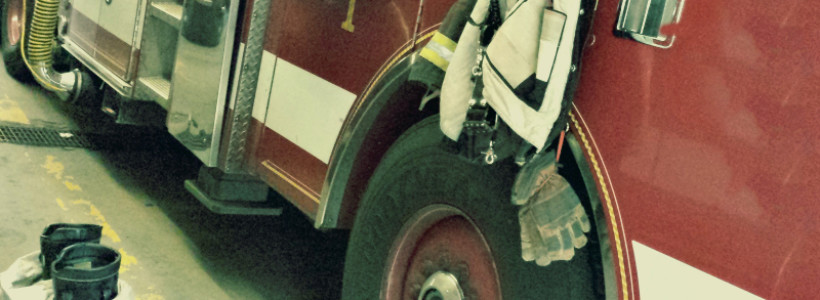Gearing Up Quickly
Speed is of the essence when it comes to putting on our turnout gear. Putting our turnout gear on properly so it protects us from the potential of burns, cuts, and scrapes is essential. Thus, the key is to don our gear properly with speed.
 The speed with which we don our gear all comes in the preparation of our gear before the tones even drop.
The speed with which we don our gear all comes in the preparation of our gear before the tones even drop.
Preparing Your Gear
1. Set up your gear for quick donning
2. Set up your gear the same way each time
3. Don your gear the same way each time
If you ride for multiple departments, set your gear up the same way for every department. This will take the guess work out of getting dressed.
Now here is my disclaimer: There are several ways to don gear but the key is to do it your way each and every time. By setting up and donning your gear the same way each and every time it will increase your speed and accuracy. Through repetition we train our mind and bodies to do it without even thinking about it. It becomes muscle memory. We follow one step after the other and do it faster and properly each and every time.
Whether you have your gear situated by the apparatus or in your locker or in a bag, set your gear up for quick deployment.
Putting On Your Gear
Have your bunker pants with your boots inside them rolled down and have your suspenders on the outside of your boots. DO NOT place them in between the two boots or under the boots since this will cause you to make extra movements to remove them before you step into your boots.
Once your boots are on, donning your gear should flow seamlessly, as follows.
 Your suspenders should be pulled up and tightened securely around your shoulders. Leaving your suspenders down may cause an entanglement hazard. Then secure your harness, or waist belt, if your bunker pants have them.
Your suspenders should be pulled up and tightened securely around your shoulders. Leaving your suspenders down may cause an entanglement hazard. Then secure your harness, or waist belt, if your bunker pants have them.
Be sure to wear the radio strap under the coat and have the radio antenna peeking out from under the bottom of the coat. Make sure the radio is accessible to change channels if needed.
Then take your hood and pull it down around your neck. I have even seen hoods snapped or sewn to the collar of the coat to ensure that the hood is not forgotten.
Your coat goes on next. Yours may need to be either buttoned or zipped up before you secure the outer closure. This is when we pull the radio mic out and either secure it to a sewn on mic tab on the turnout coat or let the mic hang down a few inches below the collar of the coat.
Gloves play a major part of keeping our hands free of cuts and injuries. Depending on what type of alarm will dictate whether or not I wear my structural firefighting gloves or my leather work gloves. Get into a habit of keeping your gloves in the same place each time. Be sure that location is functional for every incident response. Wear the proper gloves for the proper jobs.
Our helmets are among the last things we put on when arriving at an incident. Get used to wearing the chin strap and know how to secure and tighten it while wearing gloves.
This process makes us now combat ready and properly protected in our PPE.
The only thing left to do is grab our SCBA and tools, and go to work. Stay safe!
Photos courtesy of John Hayowyk, Jr.





